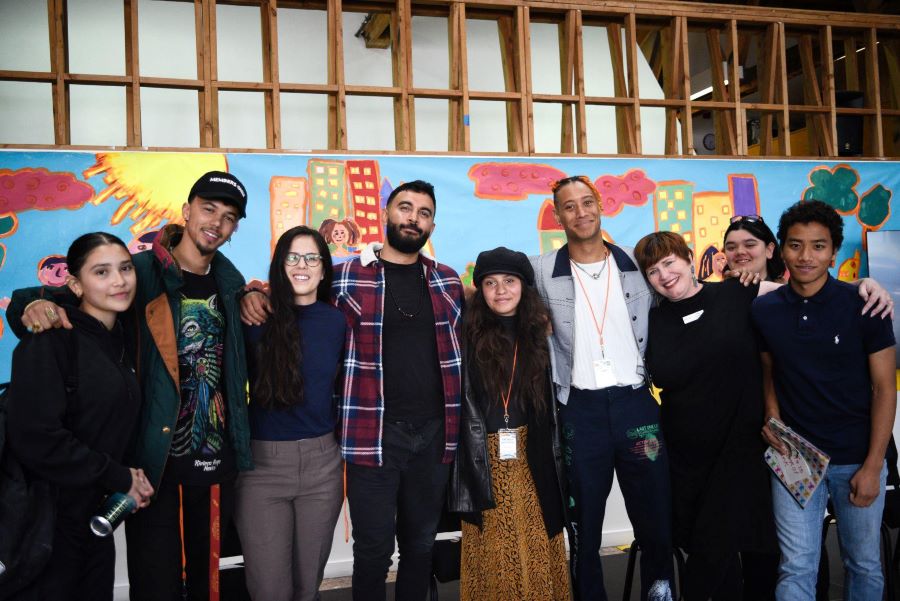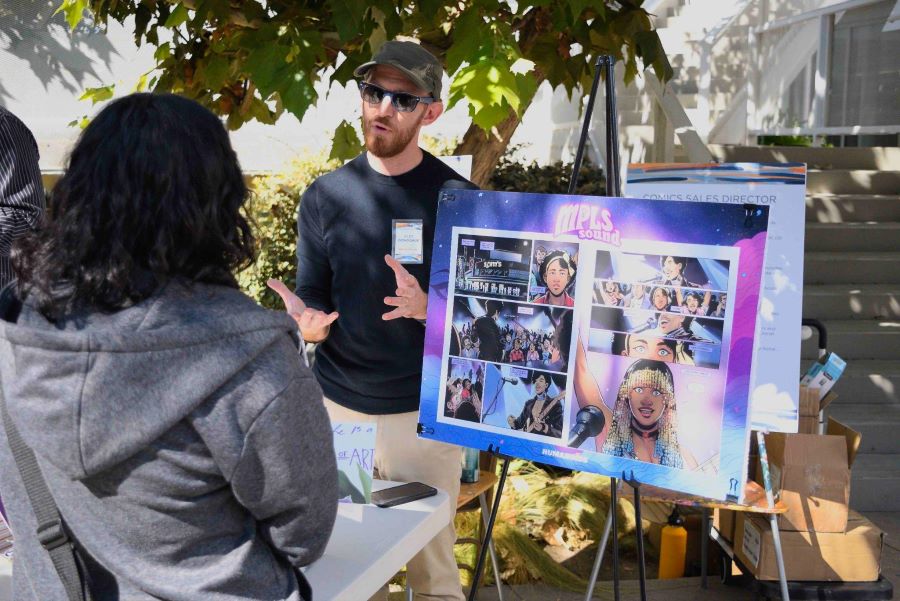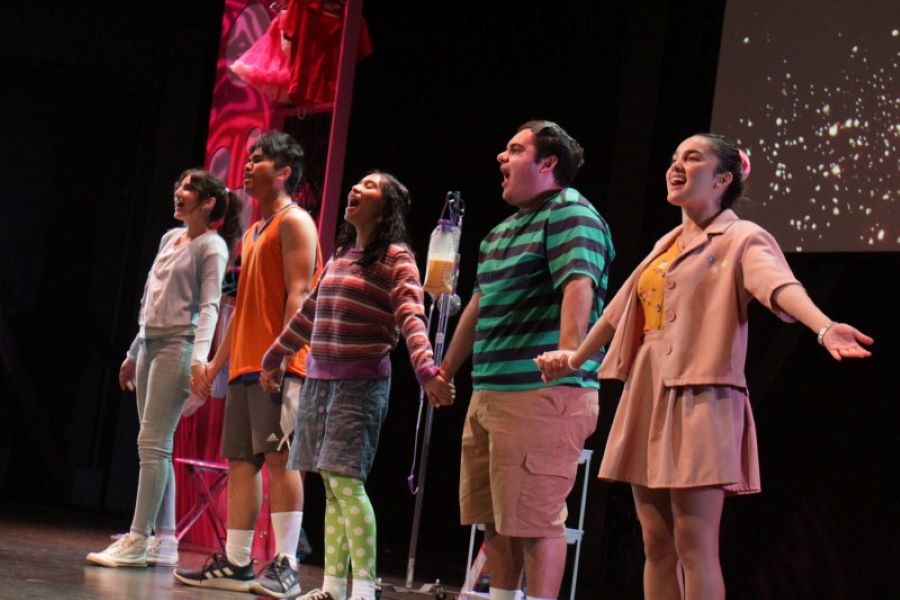Here’s how you come through the big orange door at Inner-City Arts. First, walk down Kohler Street in downtown Los Angeles until you’re about equal distance from the Fashion District and Skid Row. The Inner-City Arts building was an auto-body shop until, in 2008, it was transformed by architect Michael Matlzan into an open civic space. Wander into the courtyard, where the light moves through fan palms and reflects off mosaics, and you’ll soon spot the entrance to Rosenthal Theater—a huge orange door.
Now the ceremony begins. If you’re one of the many students who attend performances there, you must knock three times—and only three times—and then it will swing open. This kind of magic, co-created by the audience and performers with the architectural and natural worlds, is at the heart of what makes Inner-City Arts so special.
“We know that every student is not going to own a gallery,” said Collete Alleyne, chief education officer at Inner-City Arts. “Every student may not want to own a dance studio or go into graphic design. What is important for us to share is that you have a space in the creative process. There is a space for you.”
A student at Inner-City Arts might well believe that all of Los Angeles is space for their creative process. Through their Work of Art programs, artists collaborated with the Los Angeles Chargers and Ball Corporation to create aluminum artworks on the theme of sustainability, which were featured on game-days at their SoFi Stadium. For another recent project, the City Council commissioned Inner-City Arts’ to reimagine one of LA’s many pocket parks.
This intersection of arts, entrepreneurship, and civic value is what drew researchers to include Inner-City Arts in their recent report, The Connected Arts Learning Framework, An Expanded View of the Purposes and Possibilities for Arts Learning. Funded by the Wallace Foundation and led by arts learning expert Kylie Peppler and her team at the University of California Irvine, the Connected Arts Framework explores the critical role the arts play in building community cultural wealth. The research identified five approaches to this kind of connected arts learning: Culturally Sustained Arts, Doing Well by Doing Art, Future Forward Arts, Networked Arts, and Youth Voice Arts.
In the report, Inner-City Arts is given as an example of a Future Forward Arts approach. The researchers describe this method as one that engages “youth in the workforce and/or civic participation, which are seen as important activities in a fulfilling life. Organizations that take this approach help young people build relationships with working artists and activists.”

That’s certainly a big part of what drives Shelby Williams-González, the president and chief executive officer of Inner-City Arts. “I think that the arts are very important, but I recognize that in this landscape, you have to do more than just create the space for young people to explore their creativity. And that’s what Inner-City Arts is doing.”
Both Williams-González and Alleyne would be well-aware of the importance of teaching entrepreneurship to young artists—they’re practicing artists themselves. Williams-González’s dance company, Viver Brasil, has performed for Inner-City Arts students, and both leaders spoke to the importance of sharing their whole selves with their younger counterparts.
“What comes up for me is this idea of rethinking how we define success in the artistic world,” said Williams-González. “For dancers, so often it’s like, if you’re not in a musical, if you’re not doing commercial dance, then you’re not really a dancer, right? There’s that strata of who is the professional and who is not…I decided not to segment myself that way. I’m not Shelby the dancer over here and Shelby the CEO over here…I model that because I think that’s important for our students to see. You define the success of whatever hat it is that you’re wearing. And ultimately, it’s about making sure that our students know that they have options.”

The Work of Art program makes those options tangible through mentorship with professionals and through ‘shadow experiences’ where they collaborate directly with businesses in the local arts industry. Inner-City Arts also takes a proactive approach to helping their graduates navigate the precarious early stages of their careers by employing them. As Williams-González noted, it’s a holistic approach where they’re committed to the cultural ecosystem of LA and the lifespan of their students’ work.

One example Williams-González shared was Inner-City Arts graduate Ruby Barrios. Much like Williams-González and Alleyne, Barrios has carried the creativity fostered at Inner-City Arts into her professional life as both a marketing professional and a children’s book author. She then worked with Inner-City Arts to adapt her book, Ruby’s Button, into a musical that played at the Rosenthal Theatre, behind the big orange door.
As Williams-González noted about Barrios’ trajectory: “It’s a place like Inner-City Arts, where we see all those sides of her…It’s it’s about a young person who says, ‘look at all these things I do, and I can do all of them with Inner-City Arts.’”
Knock knock knock, young artists of Los Angeles. Inner-City Arts is waiting for you.
Corinna Schulenburg (she/her) is TCG’s director of communications and research.


